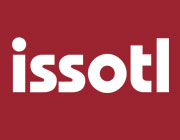
Preparing Educators and Students at Higher Education Institutions for an AI-Driven World
By Jamie Magrill and Barry Magrill
Disruptions to higher education from the rapid emergence of generative artificial intelligence (GenAI) began with concerns around misuse of GenAI and have quickly evolved into a sea-change that all of academia must grapple with, including SoTL. For SoTL, the stakes are high since, if left unchecked, GenAI may infect future scholarship by sowing bad data assumed to be real, which may be reaped, misinterpreted, and misunderstood by the next generation of SoTL scholars.
Early inklings of these processes at work are already being seen; well-established journals have begun retracting papers and reviewing articles with figures, content, and data created by GenAI. From this, we can foresee a scenario in which bad data or biased analysis produced solely by GenAI becomes canonized through repeated citation, possibly also driven by GenAI tools used for paper-writing and citation retrieval. Human judgement may be superseded in a rush to publish quickly, repeating incorrect, biased, or even hallucinatory output created with GenAI. In the interest of expediency and cognitive offloading, GenAI may be allowed to perform so many tasks in a scholarly research project that GenAI systems become the creators, editors, and evaluators of academic work. This cognitive offloading available to students, teachers, and researchers through the use of GenAI tools is testing the limits of ethical behaviour in academia. Our research into the ways GenAI has quickly evolved suggests that the human capacity to critically evaluate information and ethical considerations is an important bulwark in academia against the misuse of GenAI and may be crucial to the survival of higher education institutions in an AI-driven world.
Read the TLI article here.
Photo generated by ChatGPT-3.5 DALL-E




